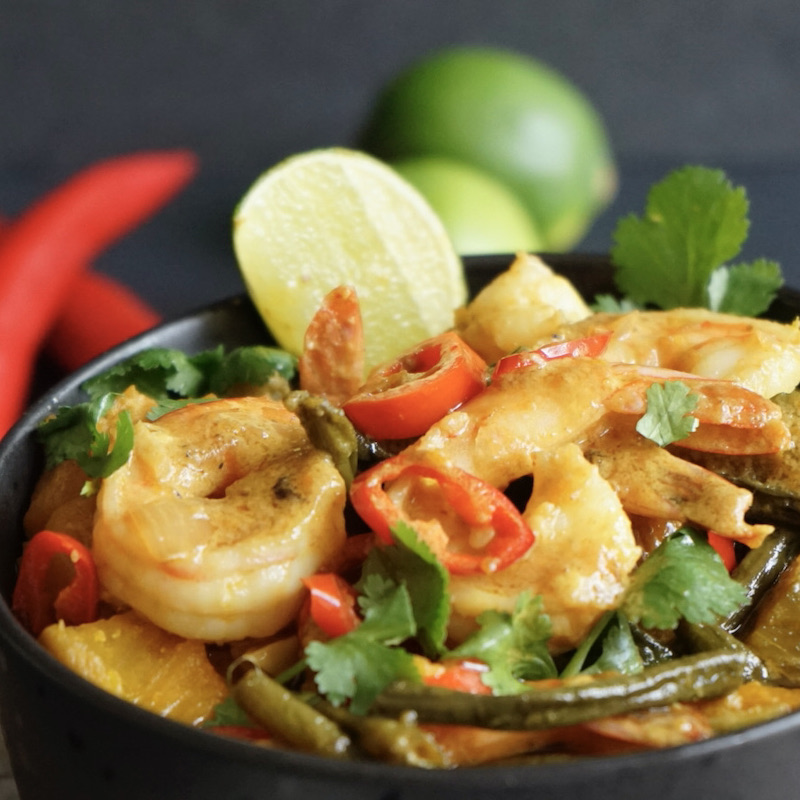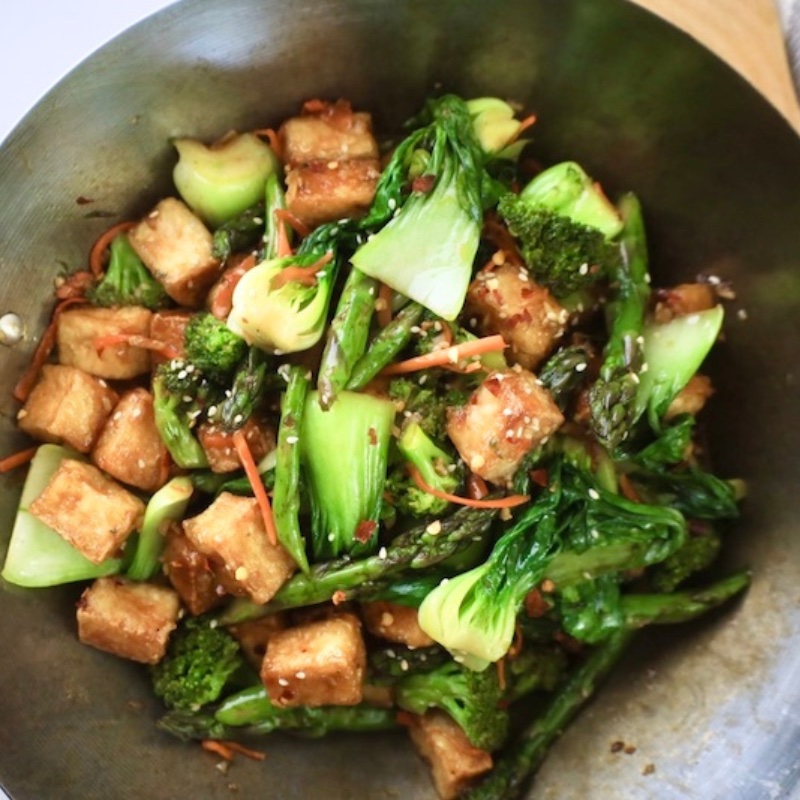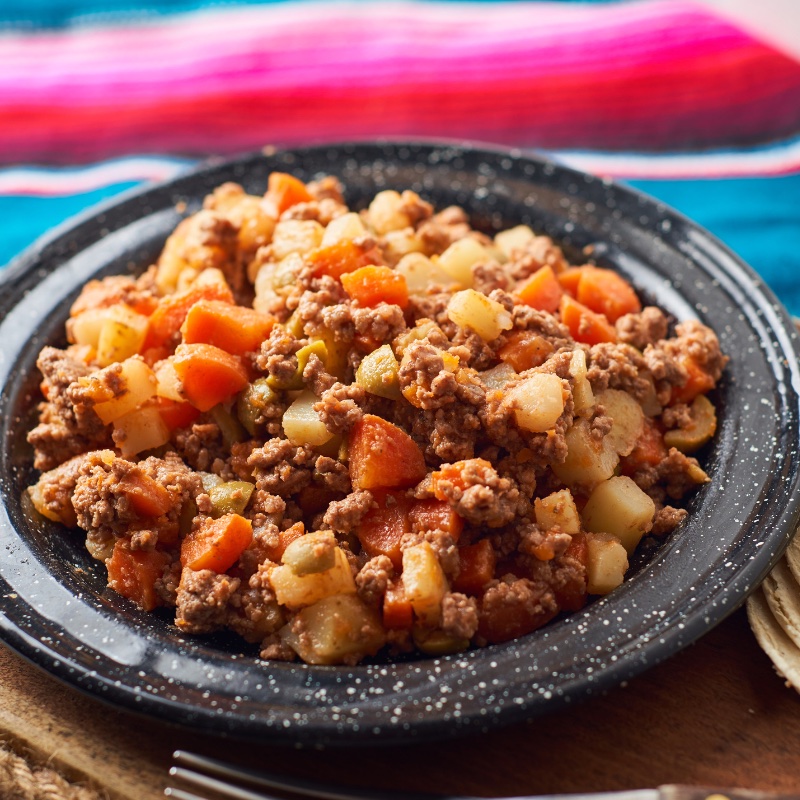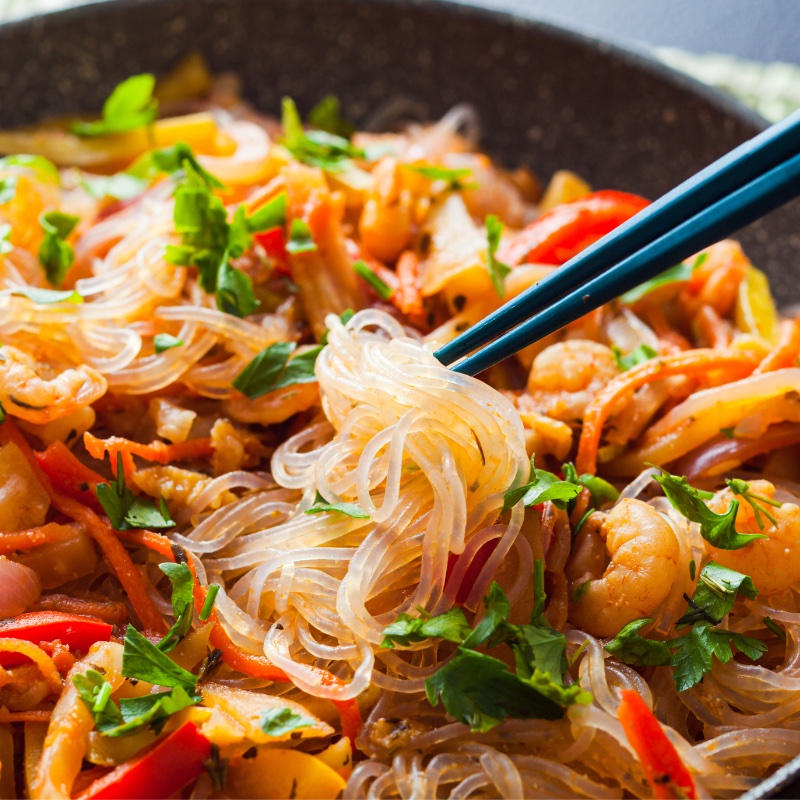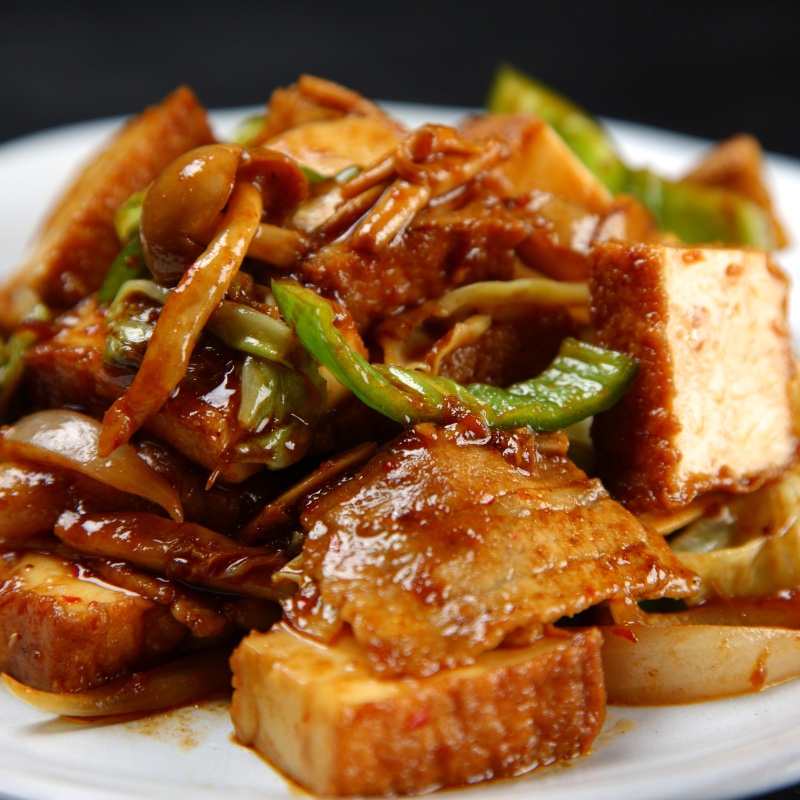Filipino Shrimp and Vegetable Stew
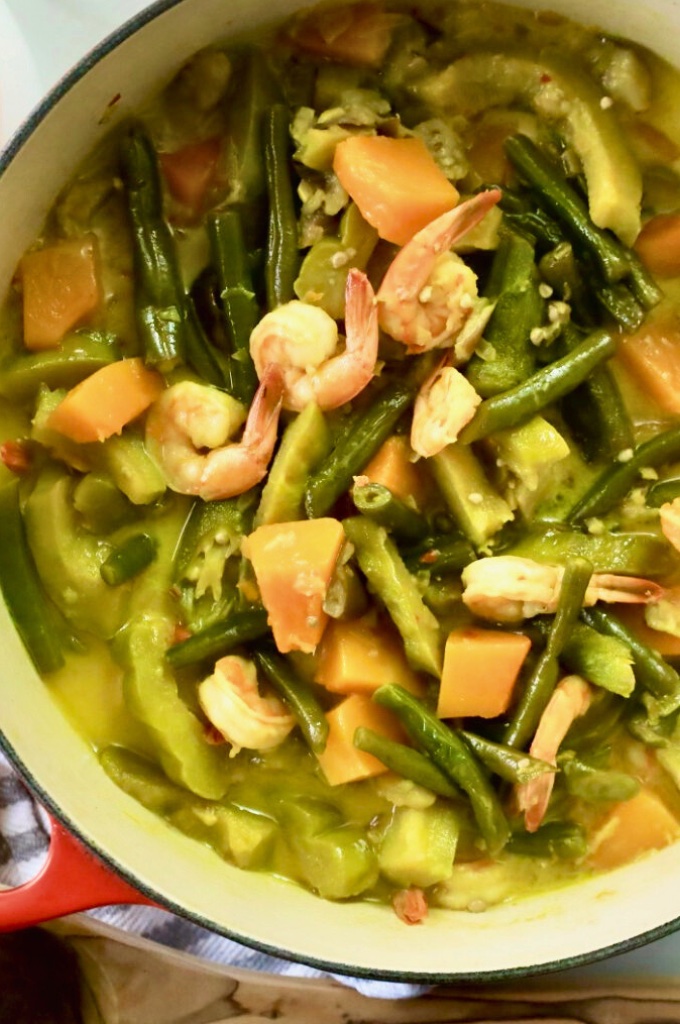
(Pinakbet)
Pinakbet is a traditional Filipino dish that is popular in the northern regions of the Philippines. It is a vegetable stew that typically includes bitter melon, okra, string beans, eggplant, and sometimes other vegetables such as squash or tomatoes. The dish is often made with shrimp, pork, or beef, and is flavored with a combination of soy sauce and fish sauce.
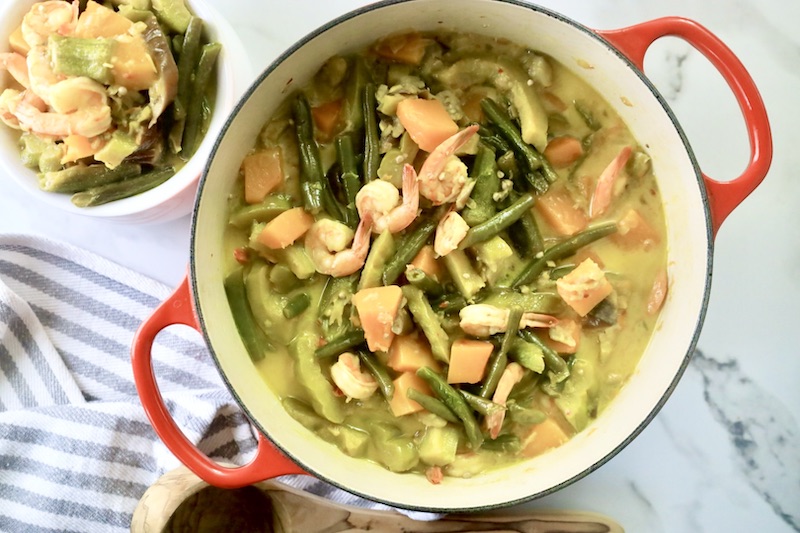
Have you ever tasted a dish that brought back fond memories of your childhood? For me, that dish is Pinakbet, a Filipino delicacy that my grandma used to cook. This dish is a perfect blend of vegetables, including bitter melon, okra, string beans, Chinese eggplant, and Kabocha squash, or Kalabasa, as we call it in the Philippines. However, since I moved to the U.S., it’s sometimes challenging to find these ingredients. Hence, I have adapted the recipe to make it easy to source the ingredients without compromising the taste. Pinakbet is a dish that holds a special place in the hearts of Filipinos worldwide. I’m happy to share my version of this dish with those who live away from home.
Ingredients Notes
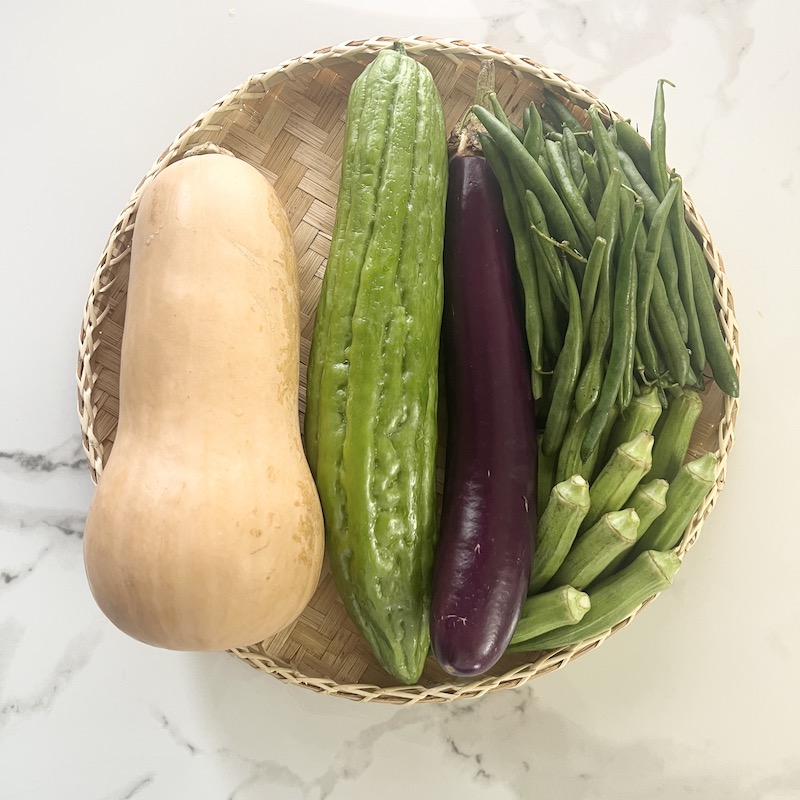
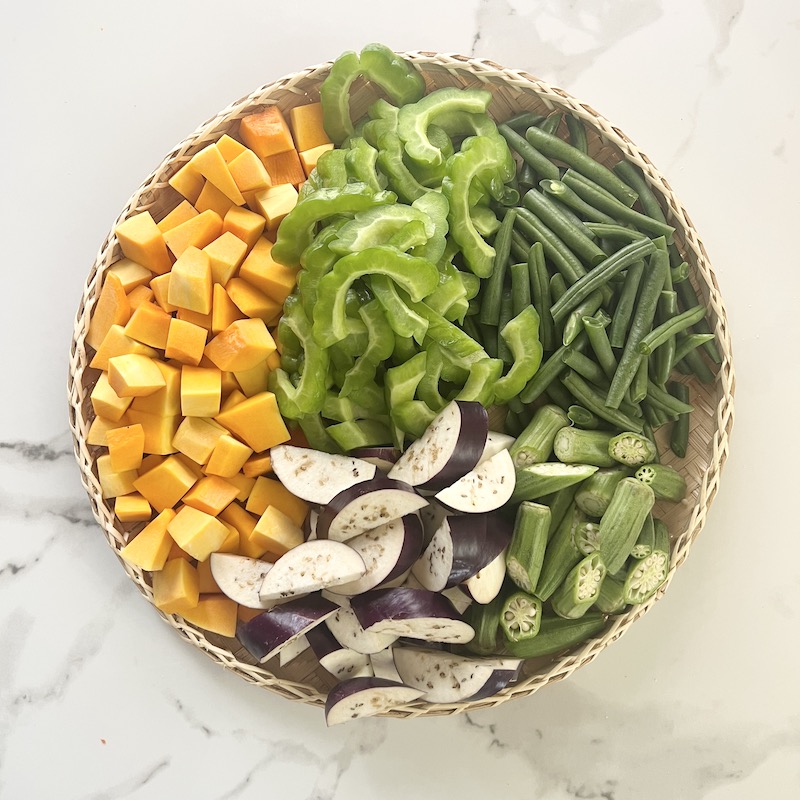
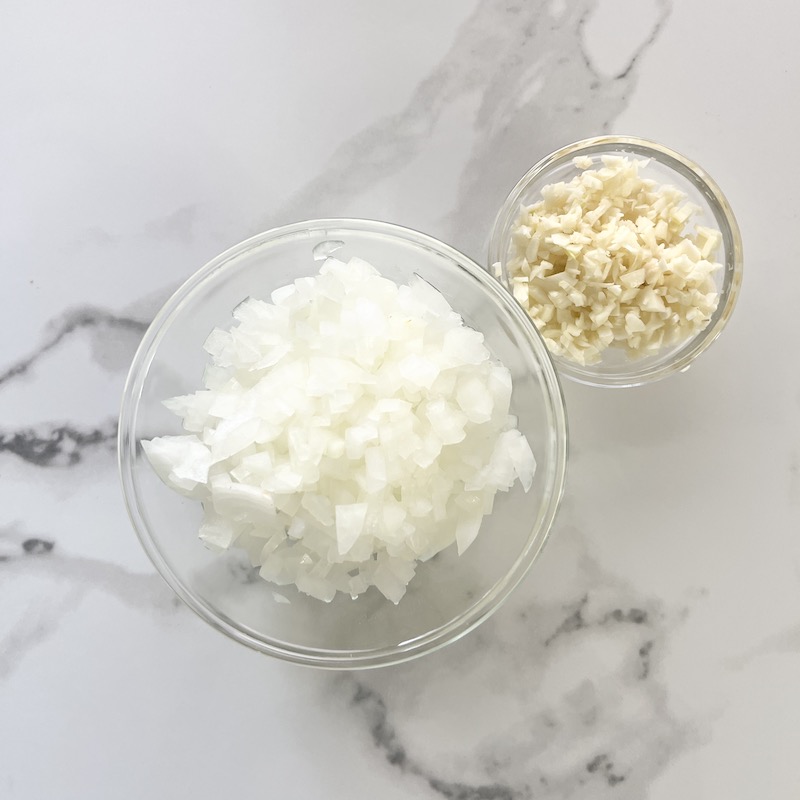

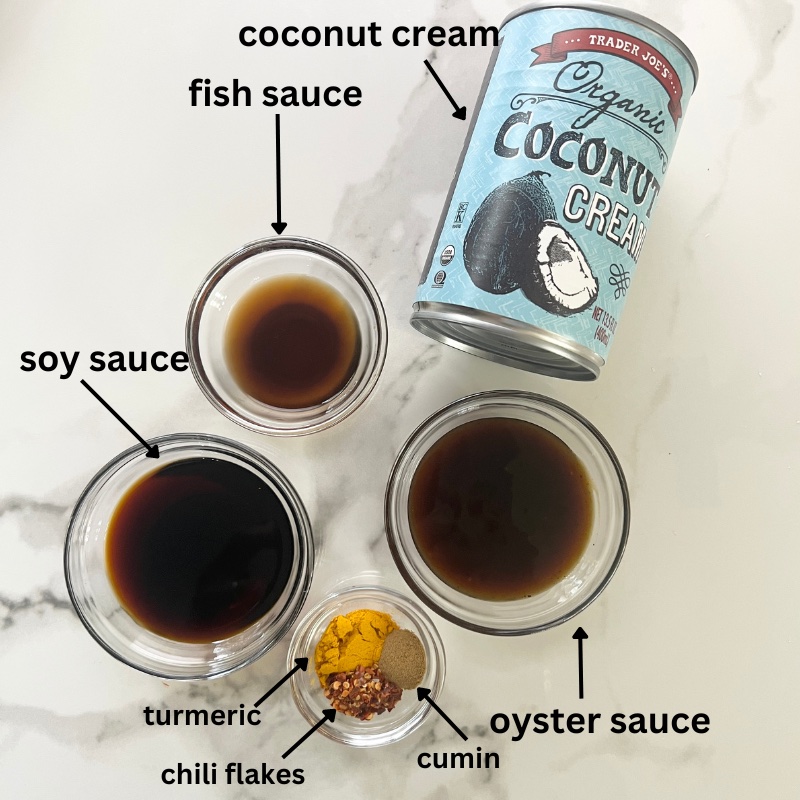
VEGETABLES
- Butternut squash: In this recipe, I used butternut squash, it’s in season, creamy, sweet, and has a mellow taste. You can also use Kabocha or Kalabasa. They are very similar, both have a round shape and a slightly flattened top and bottom, with a hard, dark green outer skin. The flesh inside is a vibrant yellow-orange color and has a sweet, nutty flavor with a texture similar to sweet potato or pumpkin. Kabocha and
-
HOW TO PEEL AND CUT THE BUTTERNUT SQUASH:

- Wash the squash thoroughly under running water, and dry it with a clean towel. Use a sharp chef’s knife to cut off both ends of the squash. Lay it on a cutting board and use the knife to carefully slice it in half lengthwise.
- When you open the squash, you’ll see a lot of seeds and strands of fiber or pulp. They’re tough and stringy.
- Use a spoon to scoop the seeds and strings from the middle of each half.
- Cut each half in half again lengthwise, so that you are left with four long quarters.
- Lay each quarter flat on a cutting board and use the knife to carefully slice off the tough skin, starting from the top and working your way down to the bottom. Or use a vegetable peeler to peel the skin.
- Once all the skin is removed, you can cut the squash into cubes or slices, depending on your preference.
THE REST OF THE VEGETABLES:
- Bitter melon: is often used in stir-fries, curries, and soups, and can be consumed raw or cooked. Its bitterness can be reduced by soaking it in salt water or cooking it with acidic ingredients such as tomatoes or vinegar. Wash the bitter melon thoroughly with cold water and pat it dry with a towel. Cut both ends of the bitter melon using a sharp knife, then cut lengthwise. Use a spoon to scoop out the seeds and white pith from the center of each half. Be sure to remove as many seeds as possible as they can be quite bitter. Slice the bitter melon diagonally (on a bias), about 1/4 inch thick.
- Chinese eggplant: is a narrower and longer variety of eggplant compared to the more common globe eggplant found in North America and Europe. It has a dark purple shade, slender, and has a sweet and mild flavor compared to the rounder varieties of eggplants. If it’s hard for you to find Chinese eggplant, then use the rounded darker color eggplant found in many grocery stores. Remove the stem parts then cut them in half and then slice on a bias.
- Green beans: One of the ingredients used in making Pinakbet is string beans, also known as “sitaw” in the local language. These beans are long and slender, and they have a string-like fiber on their sides, which is removed before cooking. In this recipe, I substituted string beans with green beans. They are more widely available than string beans which you can always find at your local grocery store. The addition of green beans will add a fresh and crunchy texture to the dish.
-
HOW TO TRIM AND SLICE THE GREEN BEANS:
-
1.) Start by washing the green beans under cold, running water. Make sure to remove any dirt debris from the beans. 2.) Next, trim the ends off using a sharp knife. You can do this by lining up the beans and cutting off the stem end with one slice, and then flipping them over and cutting off the other end. 3.) Once the ends are trimmed, you can slice the green beans diagonally or on a bias.
- Okra: The texture of okra in pinakbet is tender, yet slightly firm, and it adds a nice chewy texture to the overall dish. When cooked in pinakbet, the sliminess is minimized and the taste and texture are enhanced by the other ingredients in the dish.
-
HOW TO TRIM AND SLICE THE OKRA:
- 1.) Wash the okra in cold water and pat them dry with a clean towel. 2.) Cut off the stem end of each okra and discard it. 3.) Slice them crosswise into 1/2-inch pieces, or on a bias if you prefer a more angular shape.
-
FOR THE AROMATICS:
- Use chopped onion and minced garlic. Adding chopped onion and minced garlic when sauteing vegetables for pinakbet can bring out the flavors of the dish and provide a rich and savory taste that complements the vegetables perfectly.
- FOR THE PROTEIN: There are several great options for adding protein to this dish. One option is to add tofu, which is a great source of protein if you want to make this dish a vegetarian dish. Another great option is to add shrimp or prawns (I used shrimp in this recipe), which are a common ingredient in many Filipino dishes. Cook the shrimp and set them aside until ready to add them to the dish at the end of cooking. If you prefer meat, you can add chicken or pork to the dish.
- FOR THE SAUCE: Typically you add shrimp paste to the sauce which adds saltiness and umami flavor the the pinakbet. I opted out of shrimp paste and instead, I used fish sauce, soy sauce, oyster, sauce, and coconut cream. This combination gives the dish a milder and nice flavor profile.
- FOR THE SPICES: I added cumin, turmeric, and red chili pepper flakes. Cumin complements the sweet taste and creamy texture of the butternut squash. While the turmeric adds a nice golden-yellow color to the dish. Red chili flakes add a kick and heat for this pinakbet.
- FOR THE SAUCE: Adding soy sauce, fish sauce, oyster sauce, and coconut cream to the dish can elevate its taste even further. Combining these ingredients in pinakbet can create a harmonious blend of flavors. The soy sauce and fish sauce enhance the umami taste of the vegetables and shrimp. The oyster sauce adds depth of flavor to the pinakbet and enhances the umami taste of the vegetables. The coconut cream complements the flavor of the shrimp and those wonderful vegetables.
OTHER RECIPE IDEAS YOU MIGHT WANT TO TRY:
Coconut Shrimp and Veggie Stew
How to make Filipino shrimp and vegetable stew (Pinakbet)
Time needed: 30 minutes
PINAKBET
- COOK THE SHRIMP
Heat a stockpot with oil, add the shrimp, and cook for a minute on each side or until opaque. Remove from the pot and set aside. Drain excess liquid from the pot and add more oil to saute the vegetables.
- SAUTE
In the same pot add more oil if needed, then add the garlic and toast for a little bit, be careful not to burn them. Then add the onion and cook until tender or translucent. Add cumin, turmeric, and red chili pepper flakes, and stir until combined.
- ADD THE VEGETABLES AND CONTINUE SAUTEING
Add green beans, okra, bitter melon, soy sauce, fish sauce, and water, then cover and cook until the veggies are tender-crisp about 5 minutes. Remove the cover add the butternut squash, and stir to combine. Then add the coconut cream, stir, cover, simmer, and continue cooking until the butternut squash is fork-tender about 5-8 minutes depending on how thick you slice the butternut squash. Keep in mind to cut your ingredients as close to the same size, so they cook at the same time. Add the eggplant, it cooks fast, as soon as it softens and the skin turns light-colored. Lastly, add the cooked shrimp, turn off the stove, and remove the pot from heat.
- SERVE
Serve warm with steamed rice or fried meat, like pork chop or fried fish.
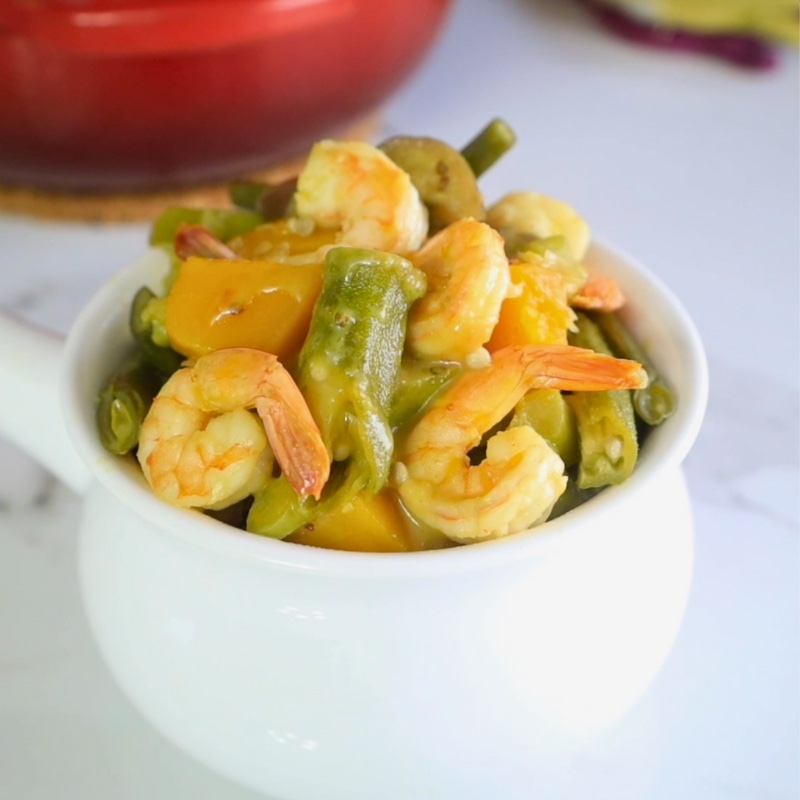
Frequently asked questions
You can add legumes, mung beans, black beans, or kidney beans are all great options that will add both protein and fiber to the dish.
You can store leftover Pinakbet in an airtight in the refrigerator for up to 3 to 4 days. To reheat simply microwave or heat on the stove until heated through.
Pinakbet is often served with steamed rice, but it can also be served with fried fish or grilled meat for a complete meal.
You can substitute bitter melon with zucchini and okra with snap peas and add tomatoes. You might have to adjust the cooking time as these vegetables are more tender.
Yes, you can use frozen vegetables in place of fresh ones. Just make sure to thaw them first before cooking.
Recommended recipes

Filipino Shrimp and Veggie Stew (Pinakbet)
Equipment
- Stockpot
- Spatula
- knife
- cutting board
- Strainer
Ingredients
PROTEIN
- 3 tablespoons vegetable oil
- 1 pound shrimp
VEGETABLES
- 2 cups peeled, deseeded, and cubed butternut squash
- 1 medium size bitter melon, Slice and deseeded
- 1 Chinese eggplant, sliced on a bias
- 1 cup trimmed and sliced green beans
- 1 cup or 11 pieces of okra
- 4 minced garlic cloves
- 1 chopped yellow onion
SPICES
- 1 teaspoon turmeric
- 1/2 teaspoon cumin
- 1/2 teaspoon red chili pepper flakes
COCONUT SAUCE
- 3 tablespoons soy sauce
- 2 tablespoons fish sauce
- 3 tablespoons oyster sauce
- 1 13.5 oz. canned coconut cream
Instructions
- COOK THE SHRIMP: Heat a stockpot with oil, add the shrimp, and cook for a minute on each side or until opaque. Remove from the pot and set aside. Drain excess liquid from the pot and add more oil to saute the vegetables. See NOTE #1
- SAUTE: In the same pot add more oil if needed, then add the garlic and toast for a little bit, be careful not to burn them. Then add the onion and cook until tender or translucent. Add cumin, turmeric, and red chili pepper flakes, and stir until combined.
- ADD THE VEGETABLES AND CONTINUE SAUTEING: Add green beans, okra, bitter melon, soy sauce, fish sauce, and water, then cover and cook until the veggies are tender-crisp about 5 minutes. Remove the cover add the butternut squash, and stir to combine. Then add the coconut cream, stir, cover, simmer, and continue cooking until the butternut squash is fork-tender about 5-8 minutes depending on how thick you slice the butternut squash. Keep in mind to cut your ingredients as close to the same size, so they cook at the same time. Add the eggplant, it cooks fast, as soon as it softens and the skin turns light-colored. Lastly, add the cooked shrimp, turn off the stove, and remove the pot from heat. See NOTE #2
- SERVE: Serve warm with steamed rice or fried meat, like pork chop or fried fish.
Video
Notes
 DI YOU MAKE THIS RECIPE? Follow us on Instagram at #leanbellaskitchen
Make sure to come back to this post and give us star ratings and reviews
DI YOU MAKE THIS RECIPE? Follow us on Instagram at #leanbellaskitchen
Make sure to come back to this post and give us star ratings and reviews
